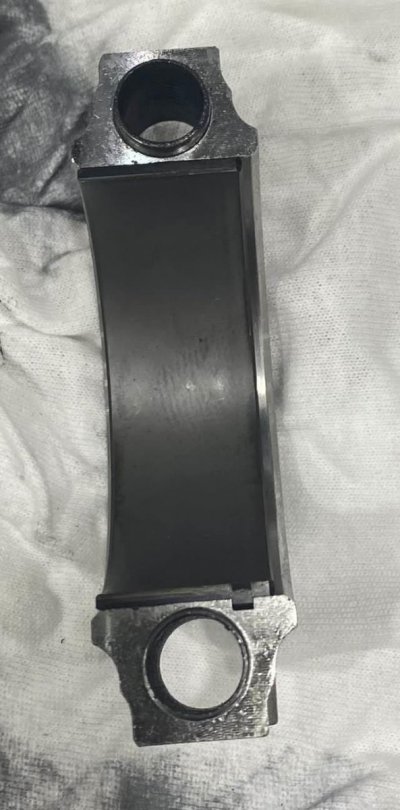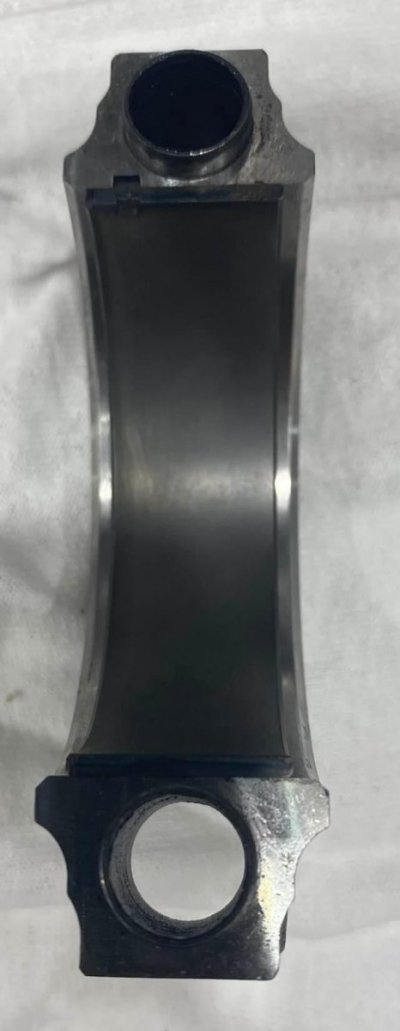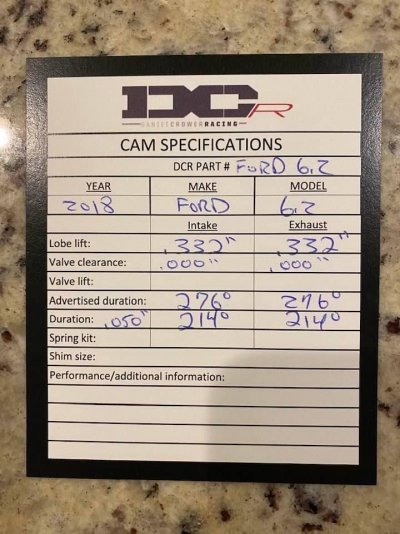bubblehead93
Full Access Member
So I promised a little rod balancing how to... there are a few good YouTube videos on piston and rod balancing...
First you need a scale, i picked up a couple cheap Chinese ones on Amazon that could read to 0.01 grams... these work like a champ... remember you don't care about absolute weight when balancing pistons and rods, just relative weight, you want precision and repeatability not accuracy. The guy balancing your crank, he cares about accuracy and precision, so his scale costs much much more so he can get the bob weights right. What you care about is not if the big end of your rod weighs 450.0 grams, you care that when you put the rod on the scale it always measures 450.0 grams and if you put another rod on there whose big end was 450.0 grams it would weight 450.0 grams as well. If you then put the two rods in a fixture on an expensive more accurate scale that indicated 446.0 grams, again, important info the guy balancing your crank, however, that accuracy does not give you anything more than you already had. Your just trying to match relative weights.
That being said, I have a little weight set for calibrating up to 1000 grams. So before each use I calibrate for a weight near what I'll be measuring. I then don't calibrate again until I'm done. If I do, I'll start from scratch... since I'm likely changing the relative zero, again its all about relative weights, accuracy is not so much important.
Using the rod balancing fixture you weigh all the big ends. You find the lightest rod big end, figure out how many grams have to be removed from each of the other rods to match the lightest big end, and then remove material by chamfering rod around the rod bolts as shown in the picture in my earlier post using a vertical belt sander. I frequently cross check back to my lightest rod to make sure apples-to-apples. A little material goes a long way with rods, as compared to pistons made of aluminum. Once I think I've matched all the big ends, I weigh all the big ends again to ensure repeatability. The fixture is very sensitive to setup. Make sure as you put the rod on and pull off that the fixture remains centered on the scale, the rod is square in the fixture, and that each rod sits on the roller bearings precisely the same. OCD is critical here to get repeatable results down to a +/-0.1 grams. The goal is everything within +/-0.1 grams of each other.
Then you need to weigh all the rods, no fixture. Again find the lightest rod. Because I'm OCD I also weighed the small end in the fixture on each rod as you would expect the delta to be the same. I like cross checks. In theory, any difference in rod weight at this point should be the small end. So again, using the vertical belt sander you remove material circumferentially around the small end. Again a little goes a long way with steel. You match all of the other rods to the lightest overall rod. Once you think they are matched, weigh them all again. Then weigh all the big ends again. Final cross check.
Now you have a balanced set of rods...
First you need a scale, i picked up a couple cheap Chinese ones on Amazon that could read to 0.01 grams... these work like a champ... remember you don't care about absolute weight when balancing pistons and rods, just relative weight, you want precision and repeatability not accuracy. The guy balancing your crank, he cares about accuracy and precision, so his scale costs much much more so he can get the bob weights right. What you care about is not if the big end of your rod weighs 450.0 grams, you care that when you put the rod on the scale it always measures 450.0 grams and if you put another rod on there whose big end was 450.0 grams it would weight 450.0 grams as well. If you then put the two rods in a fixture on an expensive more accurate scale that indicated 446.0 grams, again, important info the guy balancing your crank, however, that accuracy does not give you anything more than you already had. Your just trying to match relative weights.
That being said, I have a little weight set for calibrating up to 1000 grams. So before each use I calibrate for a weight near what I'll be measuring. I then don't calibrate again until I'm done. If I do, I'll start from scratch... since I'm likely changing the relative zero, again its all about relative weights, accuracy is not so much important.
Using the rod balancing fixture you weigh all the big ends. You find the lightest rod big end, figure out how many grams have to be removed from each of the other rods to match the lightest big end, and then remove material by chamfering rod around the rod bolts as shown in the picture in my earlier post using a vertical belt sander. I frequently cross check back to my lightest rod to make sure apples-to-apples. A little material goes a long way with rods, as compared to pistons made of aluminum. Once I think I've matched all the big ends, I weigh all the big ends again to ensure repeatability. The fixture is very sensitive to setup. Make sure as you put the rod on and pull off that the fixture remains centered on the scale, the rod is square in the fixture, and that each rod sits on the roller bearings precisely the same. OCD is critical here to get repeatable results down to a +/-0.1 grams. The goal is everything within +/-0.1 grams of each other.
Then you need to weigh all the rods, no fixture. Again find the lightest rod. Because I'm OCD I also weighed the small end in the fixture on each rod as you would expect the delta to be the same. I like cross checks. In theory, any difference in rod weight at this point should be the small end. So again, using the vertical belt sander you remove material circumferentially around the small end. Again a little goes a long way with steel. You match all of the other rods to the lightest overall rod. Once you think they are matched, weigh them all again. Then weigh all the big ends again. Final cross check.
Now you have a balanced set of rods...




